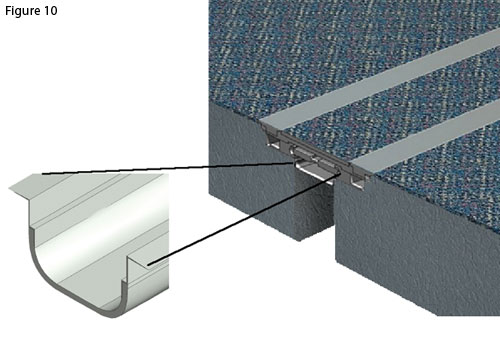Building Movement Joints and BIM
Exterior roof systems. Building separation, abutment, and expansion joints that extend through the roof will need to meet the rigors of maintaining a watertight roofing membrane. Essentially, there are two options for covering joints in roof systems. The first is a flexible bellow that can be installed along horizontal or vertical surfaces and be flashed into the roofing system to allow both movement of the bellows and integrity of the roofing membrane. They often include integral metal flanges to aid in the installation and flashing and have been used successfully and routinely in many types of roofing installations. The second type is a metal joint cover that can be used on flat or sloped roofs. These metal covers can be engineered to address snow and ice loads and provide the additional advantage of being puncture-proof.
Fire barrier systems. In the event that any of the above joint systems penetrates a wall, floor, ceiling, or roof that is also fire-rated, an additional fire barrier product will need to be added to the joint system (see Figure 10). Obviously, the first criteria to consider in selecting such an additional product is the degree of fire rating needed-1, 2, 3 or 4 hours. It will also be important that the selected product is compatible with the full joint and/or covers and does not impede their correct function. Further, the fire-rated barrier will need to be flexible and able to move as well. It is logical, then, to specify that these products come from the same manufacturer as the full joint system.
 |
For any type of joint to achieve a fire rating, an additional fire separation product must be installed first before a joint filler or cover is installed. BIM illustration: Nystrom, Inc. |
Â
Conclusion
With an understanding of the forces, joint types, filler or cover options, and the use of BIM to visualize solutions, building movement joints can be readily integrated into a design to solve a myriad of movement scenarios. Incorporating manufacturer's information and BIM files allows the architect to select from custom sizing, materials, and color finishes ensuring that whatever is needed for a particular project is appropriately selected and properly detailed. Using the information above will help assure that designs and specifications will achieve the desired success and prevent the deterioration that would otherwise occur in a building from movement.
|









